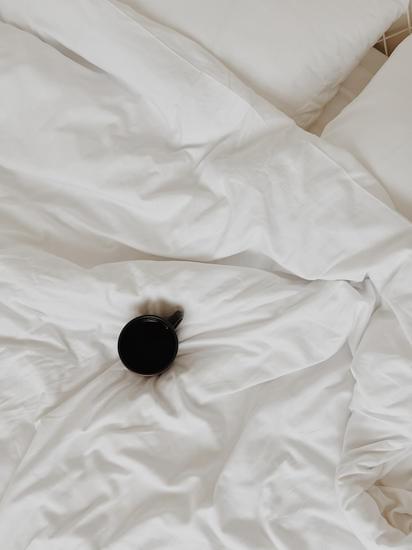Are you considering installing home decorators vinyl flooring but not sure where to start? In this comprehensive guide, we will take you through the step-by-step process of how to install home decorators vinyl flooring in your space. From the tools and materials needed to preparing the subfloor and troubleshooting common issues, we’ve got you covered.
Home decorators vinyl flooring is a popular choice for many homeowners due to its durability, easy maintenance, and wide range of design options. Whether you’re looking to give your kitchen, bathroom, or any other living spaces a refresh, vinyl flooring offers versatility and style that can elevate the look of any room.
Before diving into the installation process, it’s essential to familiarize yourself with the tools and materials needed for a successful installation. Additionally, understanding how to prepare the subfloor and measure and cut the vinyl flooring are crucial steps in achieving a professional-looking finish. This guide will provide detailed instructions on each of these aspects, ensuring that you are well-equipped to tackle your home decor project with confidence.
Preparing the Subfloor
Before installing home decorators vinyl flooring, it’s crucial to ensure that the subfloor is properly prepared. This will not only help to create a smooth and level surface for the new flooring but also contribute to its longevity and overall performance. Here’s a step-by-step guide on how to prepare the subfloor for the installation process:
1. Clean the Subfloor: Start by thoroughly cleaning the subfloor to remove any dust, debris, or adhesive residue. Use a vacuum and damp cloth to ensure that the surface is clean and free from any obstructions.
2. Check for Imperfections: Inspect the subfloor for any imperfections such as uneven areas, cracks, or dips. Use a leveling compound to fill in any low spots and sand down any high points to create a level surface.
3. Address Moisture Issues: Test the subfloor for moisture using a moisture meter. Address any moisture issues before proceeding with the installation to prevent future problems such as mold or warping of the vinyl flooring.
4. Apply Underlayment: Depending on the type of subfloor, you may need to install an underlayment to provide additional cushioning and insulation. Follow manufacturer recommendations for installing underlayment products.
By following these steps to prepare the subfloor, you can ensure that your home decorators vinyl flooring will be installed on a solid and even foundation, ultimately contributing to a professional-looking finish.
Remember – How you prepare your subfloor will have a significant impact on how well your vinyl floor will perform in the long run.
Measuring and Cutting the Vinyl Flooring
First, begin by measuring the dimensions of the room where the vinyl flooring will be installed. It’s critical to measure both the length and width of the room, as well as any alcoves or irregularly shaped areas where the flooring will be applied. Take accurate measurements multiple times to ensure precision.
Next, transfer your measurements onto the vinyl flooring material using a marking pencil and straight edge. Double-check your measurements before making any cuts to avoid costly mistakes. When cutting the vinyl flooring, always use a sharp utility knife and replace the blade as needed for clean and precise cuts.
After cutting each piece of vinyl flooring to fit its designated area, carefully lay them out in their intended location before proceeding with installation. This will allow you to make any necessary adjustments before permanently laying down the flooring.
By following these steps for measuring and cutting home decorators vinyl flooring, you can ensure a professional-looking installation that enhances the aesthetic appeal of your space while providing durability and easy maintenance.
For more detailed guidance on how to install home decorators vinyl flooring or for troubleshooting common issues during this process, reference our previous sections or seek additional resources for further assistance.
Installing the Vinyl Flooring
Gathering Your Tools and Materials
Before beginning the installation process, it’s important to gather all the necessary tools and materials. You will need items such as a utility knife, tape measure, adhesive, hand roller, and transition strips. Additionally, you’ll need to ensure that the subfloor is clean, dry, and free of any debris before starting.
Preparing for Installation
To prepare for installation, start by acclimating the vinyl flooring in the room for at least 48 hours. This allows the material to adjust to the room’s temperature and humidity levels. Next, carefully measure and cut the flooring to fit the space using a straightedge and utility knife. It’s crucial to take precise measurements and make accurate cuts to ensure a seamless installation.
The Installation Process
Now comes the actual installation of the vinyl flooring. Start by spreading adhesive onto the subfloor using a trowel, then carefully lay each piece of flooring into place. Use a hand roller to firmly press down on each section to ensure it adheres properly. Pay close attention to pattern alignment if your vinyl has a design or pattern. Lastly, install transition strips at doorways or between different types of flooring for a cohesive look.
By following these steps and taking your time with each phase of the installation process, you can achieve professional-looking results when installing home decorators vinyl flooring.
Remember that these steps are simply an overview; always refer to manufacturer instructions for specific product details and additional guidance on how to install home decorators vinyl flooring properly in your home.
Finishing Touches
When it comes to installing home decorators vinyl flooring, adding the finishing touches is an essential step to ensure a polished and professional-looking result. Once the vinyl flooring is installed, the next step is to consider how trim and molding can enhance the overall appearance of the space. Here’s a guide on how to add the finishing touches to your newly installed vinyl flooring.
One of the key finishing touches when installing vinyl flooring is adding baseboards or quarter round molding along the perimeter of the room. This not only covers any gaps or expansion spaces around the edges but also adds a decorative element that complements the flooring. When selecting baseboards or molding, it’s important to choose styles and colors that coordinate with the vinyl flooring for a cohesive look.
In addition to baseboards and molding, transition strips may be needed in doorways or thresholds where different types of flooring meet. These strips help create a seamless transition between rooms and prevent edges of the vinyl from being exposed or damaged. There are various types of transition strips available, including T-molding, reducer strips, and end caps, so it’s important to choose the appropriate type for your specific installation.
Finally, once all trim and molding are in place, consider using caulk or putty to fill any visible nail holes or gaps for a flawless finish. This helps ensure that the entire installation looks clean and professional. Taking these extra steps for finishing touches will not only elevate the aesthetic appeal of your vinyl flooring but also contribute to its longevity by providing added protection against moisture and wear.
By following these tips for adding finishing touches to your home decorators vinyl flooring installation, you can achieve a visually stunning result that will enhance any space in your home.
Maintenance and Care Tips
Once you have installed your Home Decorators vinyl flooring, it’s important to take good care of it to ensure its longevity and keep it looking great for years to come. Here are some maintenance and care tips to help you maintain your vinyl flooring:
1. Regular Cleaning: To keep your vinyl flooring looking its best, it’s important to clean it regularly. Sweep or vacuum the floor to remove any dirt, dust, or debris, and then mop with a gentle cleaner specifically designed for vinyl flooring.
2. Avoid Harsh Chemicals: When cleaning your vinyl flooring, be sure to use a gentle cleaning solution that is safe for use on vinyl. Avoid harsh chemicals or abrasive cleaners that could damage the surface of the flooring.
3. Prevent Scratches and Scuffs: Place felt pads on the bottom of furniture legs to prevent scratches and scuffs on the vinyl flooring. Additionally, avoid dragging heavy objects across the floor as this can cause damage.
4. Protect from Sunlight: Direct sunlight can cause discoloration and fading of vinyl flooring over time. Consider using blinds or curtains to protect your floors from excessive sunlight exposure.
5. Handle Spills Promptly: Accidents happen, so it’s important to clean up spills on your vinyl flooring as soon as possible to prevent staining or damage. Use a damp cloth to wipe up spills promptly.
By following these maintenance and care tips, you can help preserve the beauty and functionality of your Home Decorators vinyl flooring for years to come. With proper care, your vinyl flooring will continue to enhance the aesthetic appeal of your home while providing long-lasting durability.
Troubleshooting Common Installation Issues
Uneven Subfloor
If you encounter an uneven subfloor during the installation of home decorators vinyl flooring, it’s important to address this issue before proceeding further. An uneven subfloor can cause the vinyl flooring to bulge or create gaps, compromising the overall look and integrity of the installation.
To remedy this, consider using a self-leveling compound to even out any low spots in the subfloor. Follow the manufacturer’s instructions carefully to achieve a smooth and level surface before laying down the vinyl flooring.
Peaking or Buckling
One common issue that may arise with vinyl flooring installation is peaking or buckling, where the seams between planks or tiles create raised areas. This can occur if there is not enough expansion space left around the perimeter of the room, causing the flooring to push against itself as it expands and contracts with changes in temperature and humidity.
To fix this issue, carefully remove any affected planks or tiles and trim them to allow for proper expansion space. Additionally, ensure that there are no obstructions preventing the flooring from moving freely.
Adhesive Failure
Another potential problem during installation is adhesive failure, which can lead to loose or lifting vinyl flooring. If you notice any areas where the adhesive has failed, carefully lift up the affected section and remove any old adhesive residue. Apply a new layer of recommended adhesive according to the manufacturer’s guidelines, ensuring proper coverage and adhesion for a secure installation.
By addressing these common issues during the installation process of home decorators vinyl flooring, you can ensure a successful and professional-looking result that will stand the test of time. It’s important to follow best practices for troubleshooting and addressing any problems promptly for a finished product that looks great and functions well in your home.
Conclusion and Helpful Resources
In conclusion, installing Home Decorators vinyl flooring can be a rewarding and cost-effective way to transform the look of your home. With the right tools and materials, proper preparation of the subfloor, accurate measurements and cutting, and careful installation, you can achieve a professional-looking finish that will enhance the aesthetic appeal of any room. Additionally, by following the maintenance and care tips provided, you can ensure that your vinyl flooring remains in top condition for years to come.
If you encounter any issues during the installation process, refer back to the troubleshooting section for guidance on addressing common problems. It’s important to remember that patience and attention to detail are key when installing vinyl flooring. Taking the time to do it right will result in a beautiful and durable floor that you can enjoy for years.
For further support and guidance on how to install Home Decorators vinyl flooring, consider exploring the helpful resources provided in this article. Whether it’s video tutorials or additional tips and tricks, these resources can provide valuable assistance as you embark on your flooring installation project. With the right information at your fingertips, you’ll feel confident in tackling this DIY endeavor and creating a stunning new look for your home with Home Decorators vinyl flooring.
Frequently Asked Questions
How Do You Cut Vinyl Plank Flooring for Home Decorators?
When cutting vinyl plank flooring for home decorators, it’s important to measure the area carefully and use a utility knife or vinyl cutter to make precise cuts. Score the plank first, then snap it along the scored line for a clean cut.
How Do You Install Vinyl Flooring Step by Step?
Installing vinyl flooring step by step involves preparing the subfloor, measuring and cutting the planks to fit the space, and then clicking or gluing them into place. It’s crucial to start from the center of the room and work outwards for a balanced look.
What Is the Best Installation Method for Vinyl Plank Flooring?
The best installation method for vinyl plank flooring often depends on the specific product and its instructions. However, floating installation is a popular choice as it allows for expansion and contraction of the planks, while also providing a relatively simple and quick process.

I’m thrilled to be your companion on this exciting journey through the world of home decor and design. With a passion for turning houses into homes and a keen eye for the finer details, I’m here to help you transform your living spaces into beautiful, functional, and meaningful havens.





